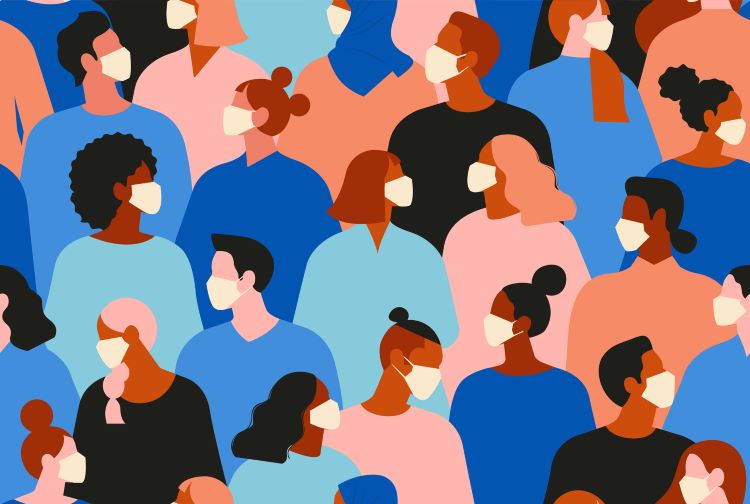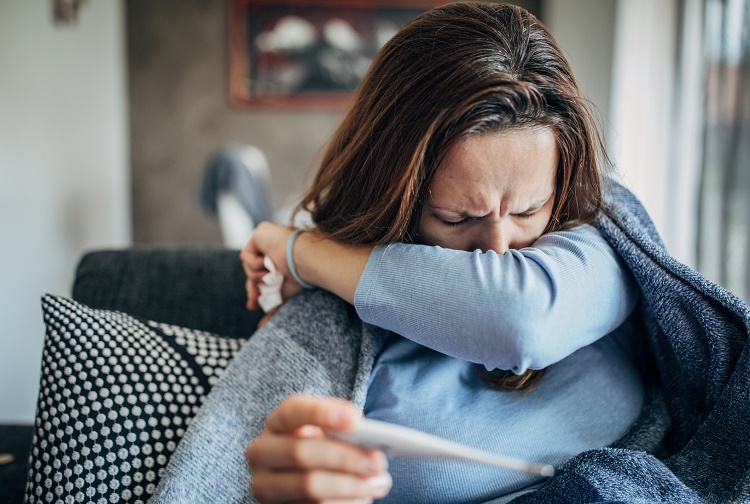
Face masks: Are they necessary?
Court order voids mask mandate on public transportation.
April 25, 2022 Photo: Getty Images
Photo: Getty Images
Updated April 25, 2022, to reflect changes to mask wearing on public transportation and in the health care setting.
If vaccinated and boosted, do I still need to wear a mask?
Although the CDC has eased its mask recommendation, face masks are still recommended under certain conditions:
- Everyone ages 2 years and older should wear a well-fitting mask indoors in public in areas where the COVID-19 Community Level is high, regardless of vaccination status.
- Wear a mask with the best fit, protection, and comfort for you.
- If you are sick and need to be around others, or are caring for someone who has COVID-19, wear a mask.
- If you are at increased risk for severe illness, or live with or spend time with someone at higher risk, speak to your healthcare provider about wearing a mask at medium COVID-19 Community Levels.
- People who have a condition or are taking medications that weaken their immune system may not be fully protected even if they are up to date on their COVID-19 vaccines. They should talk to their health care providers about what additional precautions may be necessary. For more information, see COVID-19 Vaccines for Moderately or Severely Immunocompromised People.
What about public transportation?
As a result of a court order, as of April 18, 2022, the CDC order requiring masks on public transportation, such as planes, buses, subways and trains, and at transportation hubs, is no longer in effect. However, the CDC continues to recommend that you wear a mask in indoor public transportation settings at this time. See this page from the Centers for Disease Control and Prevention (CDC) for more information. Check the individual website of your transportation choice to review its mask requirements.
And health care settings?
Mask use in the health care setting should be consistent with hospital policy. Individuals with chronic conditions at risk of severe COVID-19 infection should strongly consider ongoing mask use in indoor environments.
What makes a good face mask?
Choose a mask that:
- Has at least two layers of washable, breathable fabric
- Completely covers your nose and mouth
- Fits snugly against the sides of your face and doesn’t leave gaps
- Has a nose wire to prevent air from leaking out at the top
- If made of cloth, blocks light when held up to a bright light source
- For children, the mask was made specifically for children
If you have to touch or adjust your mask a lot, it doesn’t fit properly. Try a different mask or make adjustments:
Avoid masks that:
- Are made of fabric that makes it hard to breathe, such as vinyl
- Have exhalation valves or vents
- If made of cloth, doesn’t block out the light when held up to a bright light
See this CDC page for more information.
Masks, respirators — what’s the difference?
Respirators and well-fitting masks help protect you and others from viruses that are spread in respiratory droplets when people cough, sneeze, talk and breathe.
Some work better than others in terms of preventing spread. In general, cloth masks are least efficient at preventing transmission, and N95 respirators are the best. The best mask, however, is the one you will wear consistently.
Please see this CDC page for information on the differences between masks and respirators.
N95s, KN95s, masks in a box – can you just tell me what to buy?
Masks. Respirators. Cloth. Disposables. Valves. No-valves. So many choices. Let’s cut to the chase.
N95 respirators provide the highest level of protection — for both you and those around you. If they are NIOSH approved and a good fit, they filter out at least 95% of the particles in the air you breathe in. NIOSH (the National Institute for Occupational Safety and Health) is a CDC-affiliated research agency dedicated to worker health and safety standards. N95 respirators look like this.
KN95s are also very effective at preventing spread. However, there are lots of counterfeits on the market that don’t meet quality standards and may not be that effective.
Here are some red flags to look out for:
- If the KN95 doesn’t give a brand name; that is, it doesn’t provide the name and address of the manufacturer on the box, don’t buy it.
- If it displays the FDA logo, don’t buy it. The FDA does not allow other countries to display its logo.
- If the masks come individually wrapped in clear plastic, with no information about the manufacturer on the packaging, don’t buy them.
Watch this video produced by the Canadian Broadcasting Network for help identifying counterfeit masks:
For a list of known counterfeit masks, see this CDC page.
Masks made by businesses known for manufacturing PPE (personal protective equipment), such as 3M, are good sources of respirators.
Although N95 and KN95 respirators are the best PPE out there, they do cost more than cloth or disposable masks. They are also more difficult to wear for long periods of time.
What about my decorative cloth mask, or the cheaper, disposable masks you buy in a box? Are they any good at all?
Yes. These masks do offer some protection. Follow the guidelines up top on what to look for in a mask. See this CDC page for more information.
To convert your disposable mask into one offering more protection, please see the video below.
Here are some other tips on making your cloth or disposable masks more protective:
- Wear a disposable mask underneath and your cloth mask on top
- Combine either a cloth mask or disposable mask with a fitter or brace
- Use masks that attach behind the neck and head with either elastic bands or ties (instead of ear loops). This provides a snugger fit.
How should I clean my mask, and how often?
Reusable cloth masks should be washed as soon as they become dirty, or at least once a day. If you have a disposable face mask, throw it away after wearing it once. Wash your hands after handling or touching a used mask. You can wash your mask by hand or in the washing machine. You can put masks in the dryer or let them air dry.
For the latest information on COVID-19 face masks, see the Centers for Disease Control and Prevention or the Virginia Department of Health.
This story was originally published May 26, 2020, under the title, “Face masks: Why to wear them, how to clean them.”
See All News See COVID News


